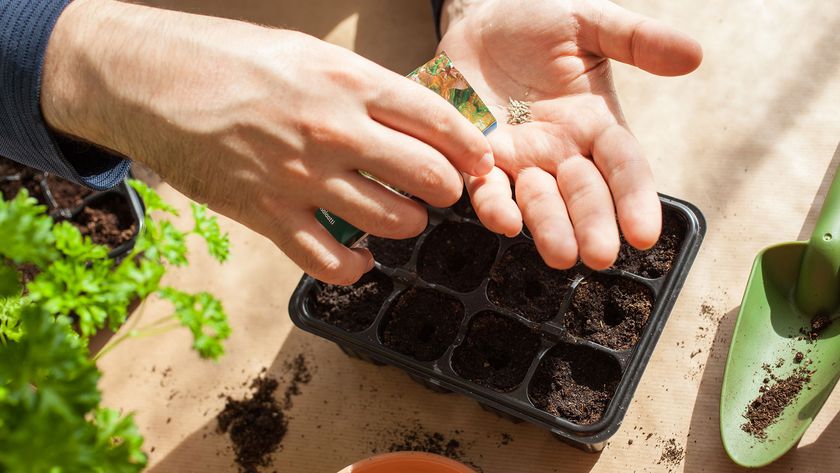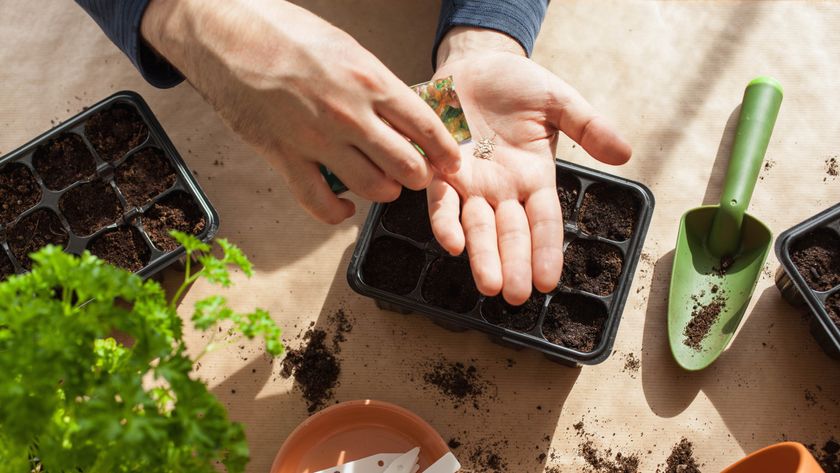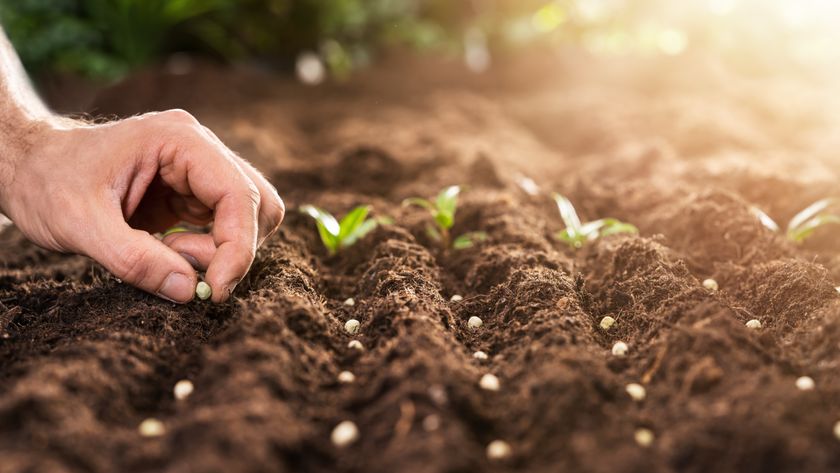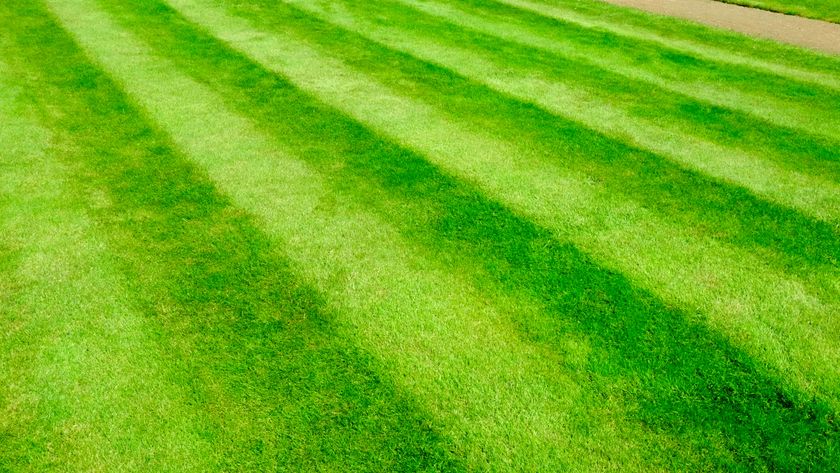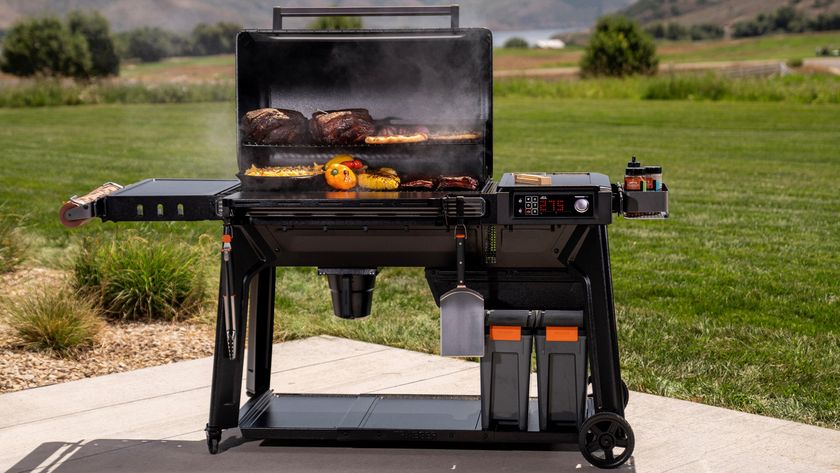7 vegetables to sow in August, according to professional gardeners
For a bountiful harvest this fall

If you’ve planted vegetables during the spring and early summer, you’ve likely already reaped the benefits of growing your own. Homegrown vegetables are particularly tasty and are most delicious when freshly picked. What’s more special than enjoying broad beans fresh from their pods, lightly cooked with lashings of butter and black pepper?
However, if you haven’t grown any vegetables this year or you want to continue planting more, there is plenty of time to get started in August, and it won’t cost you any more than the price of a packet of seeds.
Gary Pilarchik, author of Grow an Edible Landscape, says, “The best thing about planting vegetables in August is that almost everything can be direct seeded into the soil. This is the most inexpensive way to grow plants for food. The warmth of the soil and the heat of the summer helps to speed up germination and early plant growth.”
Discover top tips on direct sowing and the best vegetables to grow in August and join me in my vegetable growing journey.
The key to direct sowing
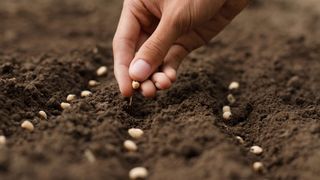
Pilarchik explains that the key to direct sowing is a plentiful supply of water. “The top 2 inches of soil can heat up to 100°F during summer days. Watering every day for 10-14 days ensures the plants will germinate, not ‘burn’ up, and establish deeper roots.” He continues, “After that period, you can adjust watering to every second or third day based on temperatures and rainfall.
Many gardeners may fear it’s too late to plant summer squash, cucumbers and beans in August, as they tend to be planted in May and June, but Pilarchik says this doesn’t need to be the case. “If your area doesn’t get a frost until October, you have plenty of time to direct seed these plants again in August.”
As he mentioned earlier, they will germinate quickly and mature faster. “Many summer squash and zucchini will mature 35 days after germination. Cucumbers and beans can be ready in as little as 45 days. If you don’t have time for pole beans to mature, bush beans will do the trick,” he adds.
Sign up to get the BEST of Tom's Guide direct to your inbox.
Get instant access to breaking news, the hottest reviews, great deals and helpful tips.
Succession planting
Pilatchik suggests planting zucchini and cucumbers at least three times a summer. “Early plants are often killed by pests and diseases or the high heat of summer,” he says, “Successive planting is often more successful because the life cycle of pests and diseases have passed.”
He also finds that some of the best-tasting cucumbers come out of his early fall garden when the plants have no pest or disease issues.
1. Zucchinni
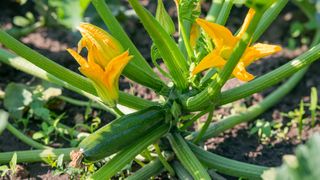
Zucchini plants prefer full sun, with a position receiving at least six hours of sunlight a day. They do best in well-drained soil with plenty of enriched organic matter. The Seed Collection recommends sowing zucchini seeds directly into the soil at about 4/5 inches deep and 20-24 inches apart and spacing rows 32-47 inches apart. You can expect seeds to germinate within 7-14 days.
Keep the soil moist, but avoid making it too wet or dry. Water the plants in the early morning or late afternoon, and avoid watering the leaves to prevent fungal diseases, such as powdery mildew.
Planting zone: 3 to 11
2. Cucumber

Similar to zucchini, cucumbers thrive in full sun, receiving six hours of sunlight a day. They also require well-drained soil with plenty of organic matter. The Seed Collection recommends planting cucumber seeds 2/5 inches deep and 16-24 inches apart, with rows spaced at 39-47 inches. Just like zucchini above, the soil should be kept neither too wet nor dry, and your watering method should be the same. You can expect seeds to germinate within 4-10 days.
Planting zone: 4-11
Cool weather crops
August is also a great time to plant some of your fall garden or crops that love the cool weather and are frost tolerant. “I direct sow carrots, beets, lettuce, kale, collards, and cabbage,” says Pilcharik. “The same principles of watering need to be followed for the first 10-14 days, and the use of shade cloth can really help,” he adds.
These plants can handle frost and prefer a cooler fall climate, so you can start them in August to establish strong growth during this warm month. What is the benefit of planting at the start of August? “Early growth means maturation earlier in the fall and food earlier to your table,” says Pilcharik.
3. Carrots

These orange delights are another crop that can be grown in August. Sally Allsopp, founder of All that Grows, says, “If you’ve sown some early and already harvested them, you could plant a second batch and grow some small but perfectly formed finger-sized carrots, which will be ready in a couple of months.”
Carrots thrive in well-drained, sandy or loamy soil that is free of stones and other obstructions. Allsopp adds, “The soil should be loose and deep, allowing the carrots to grow straight and develop their carroty shape. Aim for a pH between 6.0 and 6.8 for the best growing conditions.”
They also prefer full sun, needing at least six hours of direct sunlight per day, which Allsopp says is especially important if you grow them this late in the year.
She also explains that carrots need consistent watering for a successful crop, “Water your carrot bed regularly, ensuring the soil remains moist but not waterlogged,” she says.
Then, once the carrot seedlings have germinated, thin them out, “Allow for adequate spacing between each plant. This will help prevent crowding and ensure the carrots have room to grow and thrive,” she adds.
Planting zone: 4 to 8
4. Beets

“Beats are a fast-growing vegetable, so they can be planted late in the season for harvesting in the autumn,” says Allsopp. She recommends planting the seeds directly into the ground or a tub, as they don’t like to be moved.
“Aim to sow them about 1 inch deep and 6 inches apart, in rows spaced 12 inches apart. Germination typically takes 7-14 days, depending on soil temperature. Once the seedlings have developed their first set of leaves, thin them out to leave the strongest plants spaced 1/2 inch apart,” she adds.
Beetroot favors well-drained, fertile soil that is rich in organic matter, with an ideal pH range between 6.0 and 7.5. If planted in August, beets will also do best where they can receive six hours of full sun a day.
Planting zone: 2 to 10
5. Lettuce

Enjoy luscious lettuce leaves in your salads this fall, buy planting seeds in August. Lettuce is an easy crop for beginners and because it grows quickly, it’s best to plant a small amount at a time and stagger your planting.
Sow the seeds directly into the soil about ¼ inch deep into pre-marked drills measuring 8 to 12 inches. Then, place a pinch of seeds every four inches. Cover the drills and water.
You can continue to sow lettuce seeds every two weeks for a constant supply of green leaves as long as the weather remains favorable.
Top tip
To encourage the small seed to germinate and grow, ensure the soil is fine and crumbly. Clods of soil will make it harder for the seeds to emerge.
Planting zone: 4 to 9
6. Kale

Kale is a healthy vegetable with green or purple leaves rich in antioxidants, vitamin C, vitamin K, and betacarotene and is best enjoyed cooked. It prefers a sunny position with at least six hours of full sun each day. The Seed Collection advises sowing kale seeds directly into well-drained soil with plenty of organic matter. Sow them ½ inch deep, placing them 16-24 inches apart, with rows 20-40 inches apart. You can expect the seeds to germinate within 6-12 days.
Kale will do well with 1 to 1 ½ inches of water per week. If the leaves turn yellow, it's a sign your kale is overwatered.
Top tip
Mulching around your kale plants will help retain moisture and keep the soil cool.
Planting zone: 7-9
7. Peas

Peas are one of the easiest vegetables to grow for beginners. Pilcharik is also a fan of peas and says the key to success is planting them 70-90 days before your first frost. “Peas love the cool weather and the plant itself can take a frost. However, the flowers and peapods can’t,” he says. “You want to allow enough time for the plants to mature and produce before frost settles in.”
He also adds that using a shade cloth is really effective for starting peas in the summer.
According to the The Seed Collection, pea plants are best grown in full sun, where they can gain at least six hours of sunlight each day. They prefer an alkaline soil with a pH below 7, which can be adjusted with dolomite or garden lime. Sow the seeds directly into the soil about 4/5-inch deep and 8 inches apart, with rows 40 inches apart. The soil should be kept moist, without being too wet or dry. The seeds should germinate in around 7-21 days.
Planting zone: 3 to 11
The benefit of a shade cloth
“A shade cloth will keep the soil and plant roots cooler during August and the cooler roots means better growth,” says Pilcharik. "If your temperatures are regularly over 90°F for most of August, a shade cloth can make all the difference.”
He suggests setting it after 10-14 days of growth.
Shade cloths protect crops from the sun by 50% and are made of woven material in different densities. A cloth with a 30-60% density is ideal for protecting vegetables.
Wineman 50% Black Shade Cloth, 10 x 20ft: was $25 now $23 @ Amazon
This shade cloth protects your vegetables from sunlight while still allowing air to circulate. It's made from high density polyethylene, which is lightweight and durable. Grommets are located on each side of the cloth, to allow you to hang it freely and easily without risk of tearing.
Give it a go and experiment
“The best way to figure out when to plant these crops in August is to give it a try and take notes,” says Pilcharik. He recommends planting some zucchini at the very beginning of the month, and another batch three weeks and seeing how they perform.
“The best thing about planting in August is you can direct seed all these crops. Plant them at different times, take notes, and next year, you’ll improve your planting plan. August for me is like starting a new summer and fall garden at the same time,” he concludes.
So put on your best gardening gloves embrace the fun of growing your own.
More from Tom's Guide

Camilla Sharman has worked in publishing and marketing for over 30 years and has covered a wide range of sectors within the business and consumer industries both as a feature, content, and freelance writer.
As a business journalist, Camilla has researched articles for many different sectors from the jewellery industry to finance and tech, charities, and the arts. Whatever she’s covered, she enjoys delving deep and learning the ins and out of different topics, then conveying her research within engaging content that informs the reader. In her spare time, when she’s not in her kitchen experimenting with a new recipe, you’ll find her keeping fit at the gym. In the pool, stretching at a yoga class, or on a spin bike, exercise is her escape time. She also loves the great outdoors and if she’s not pottering about in her garden, she’ll be jumping on her bike for a gentle cycle ride.

